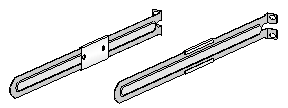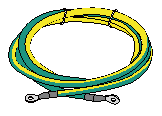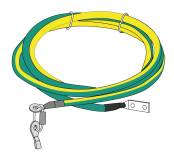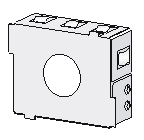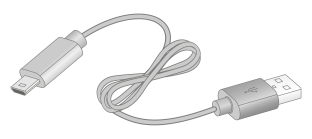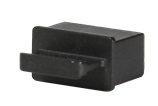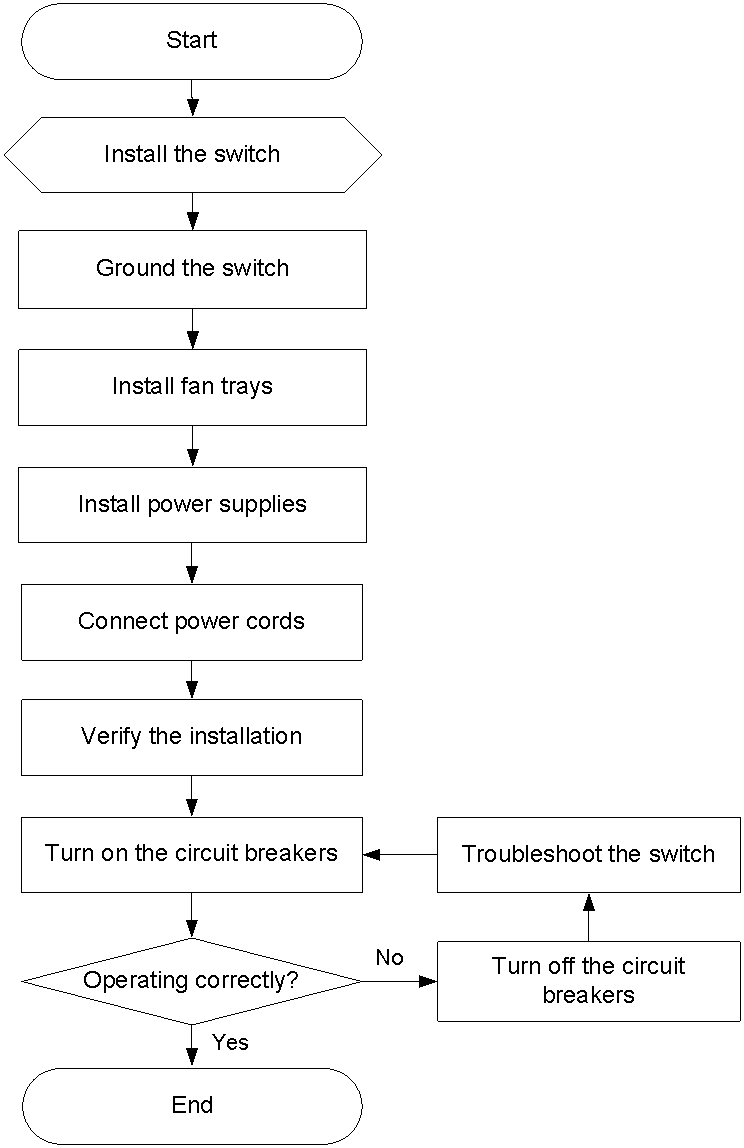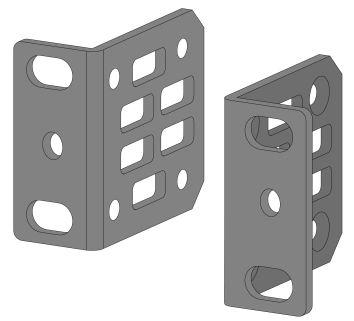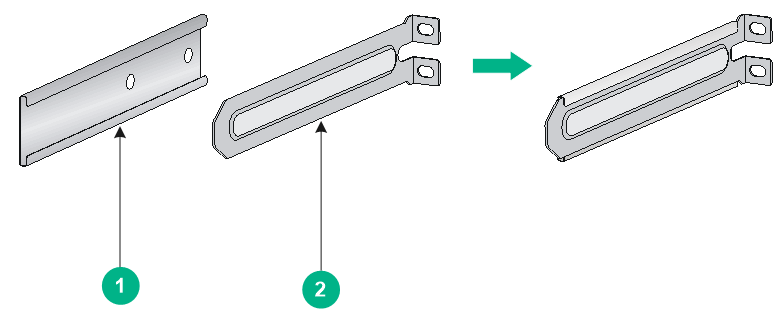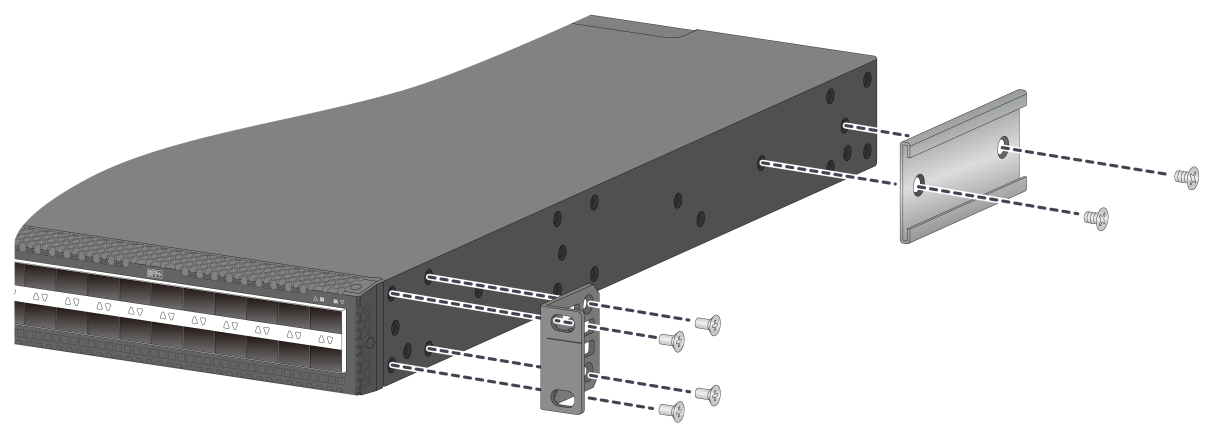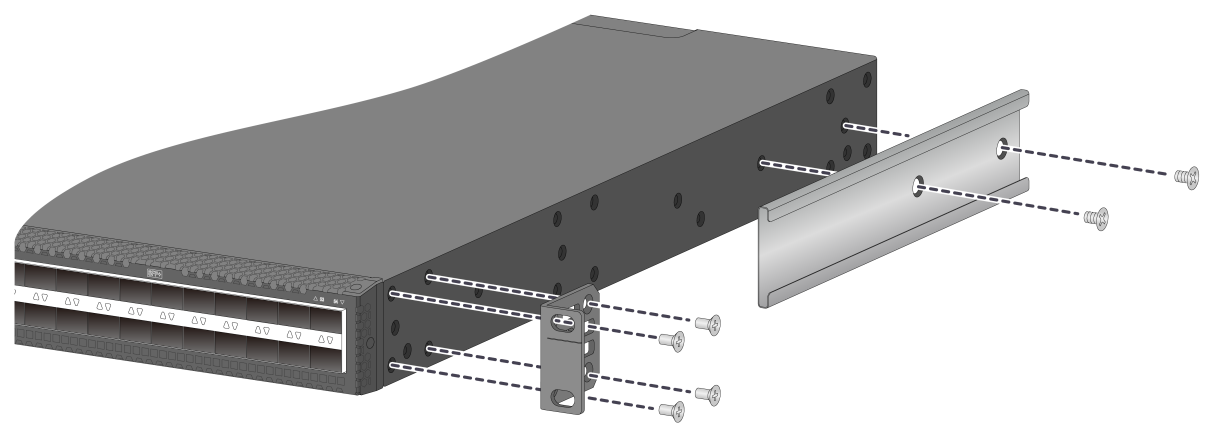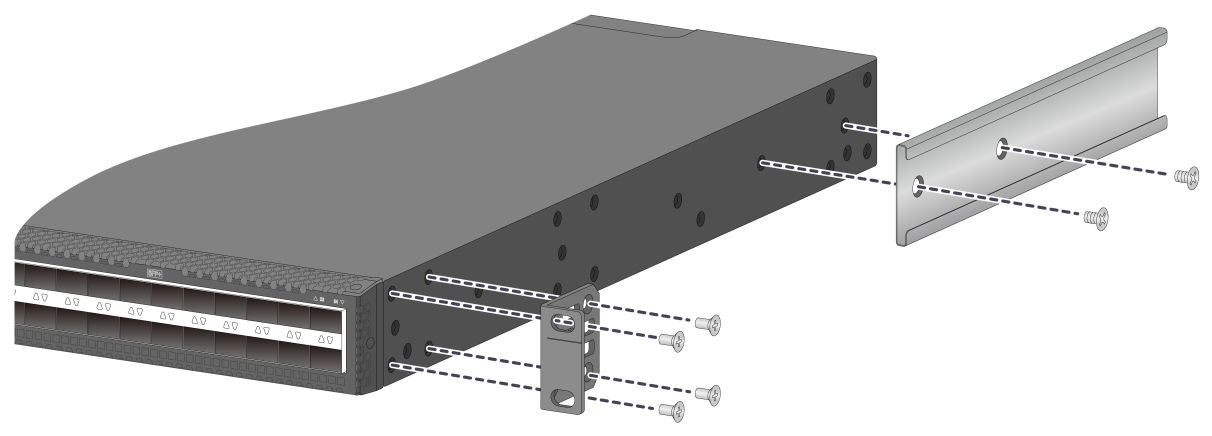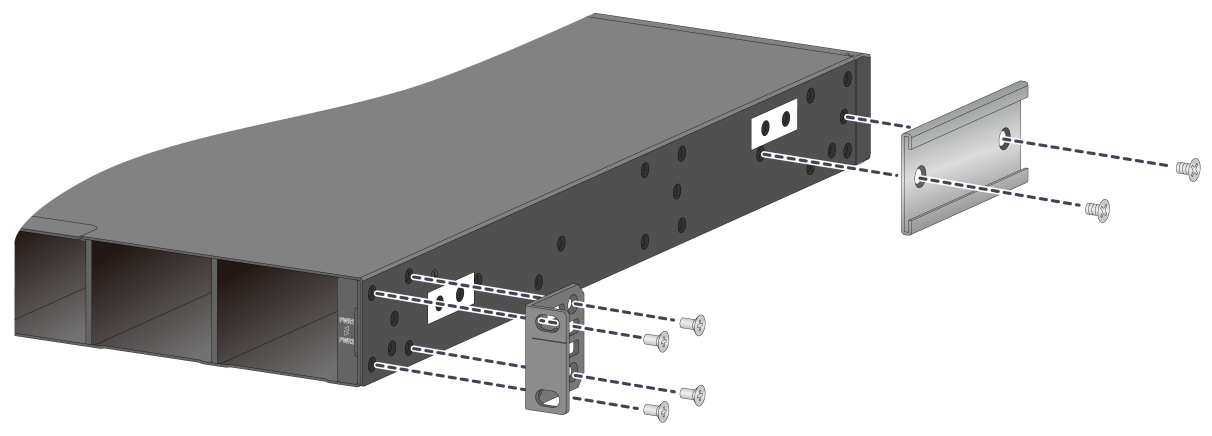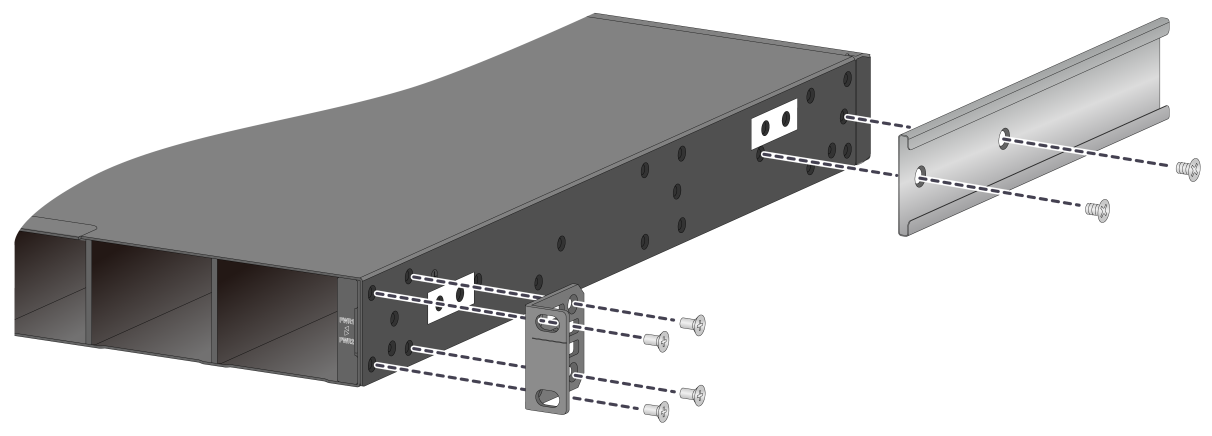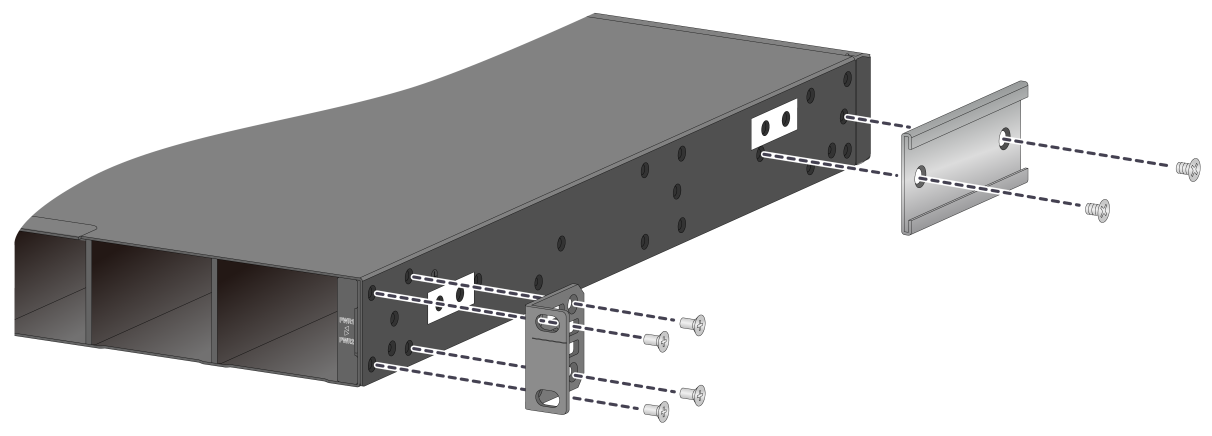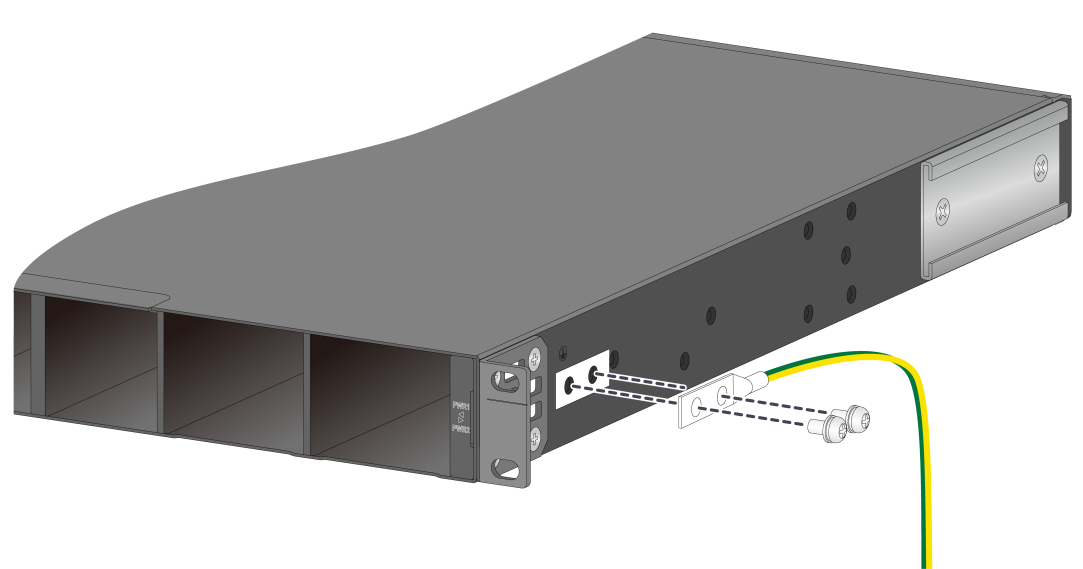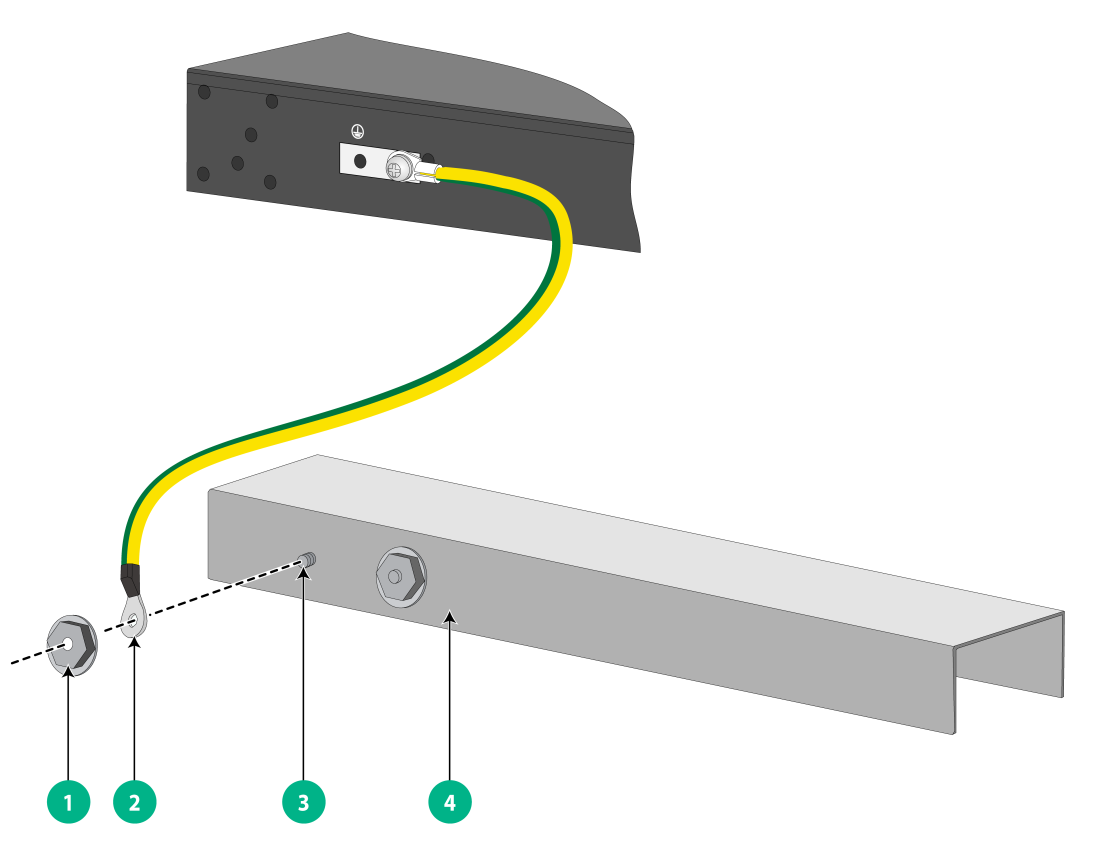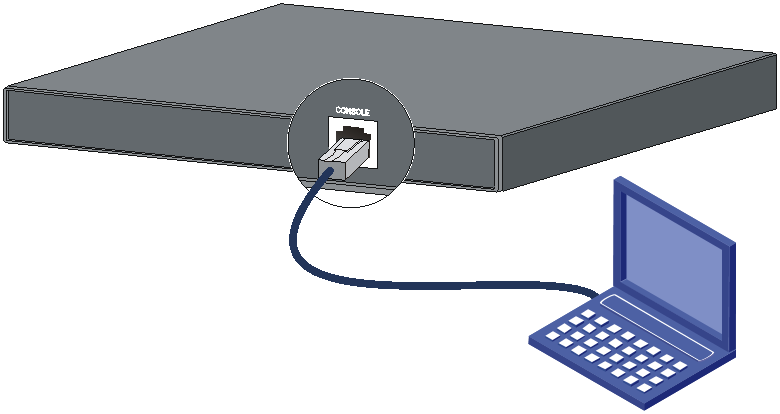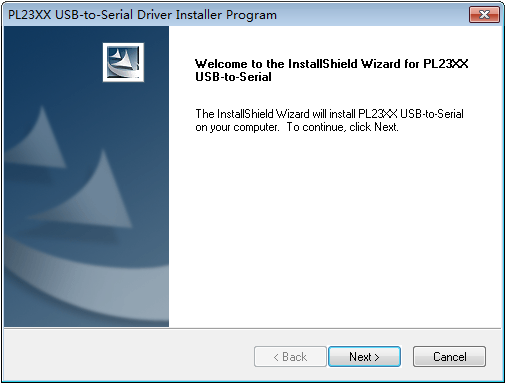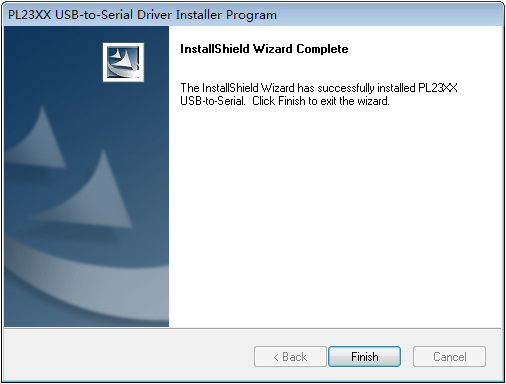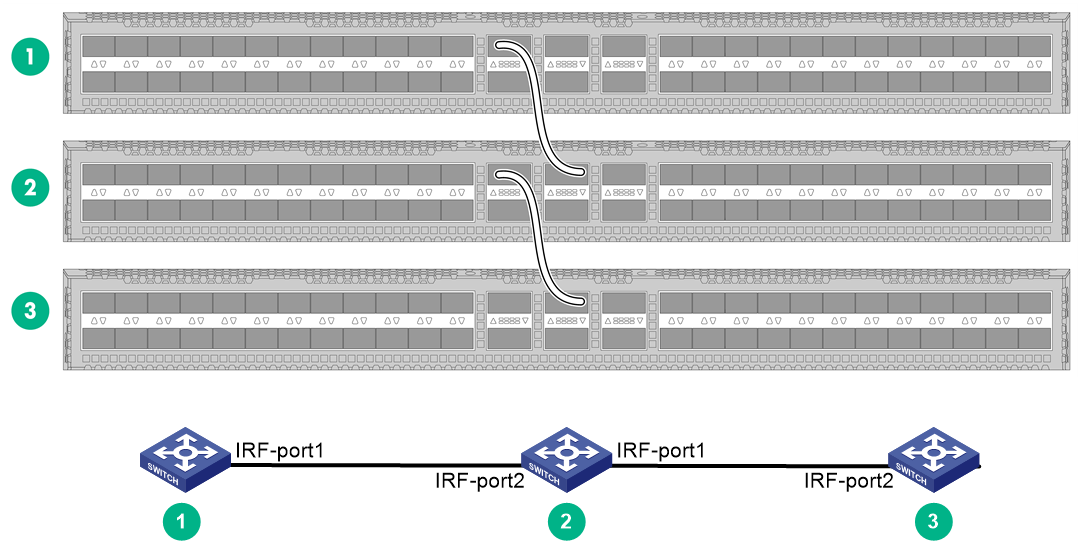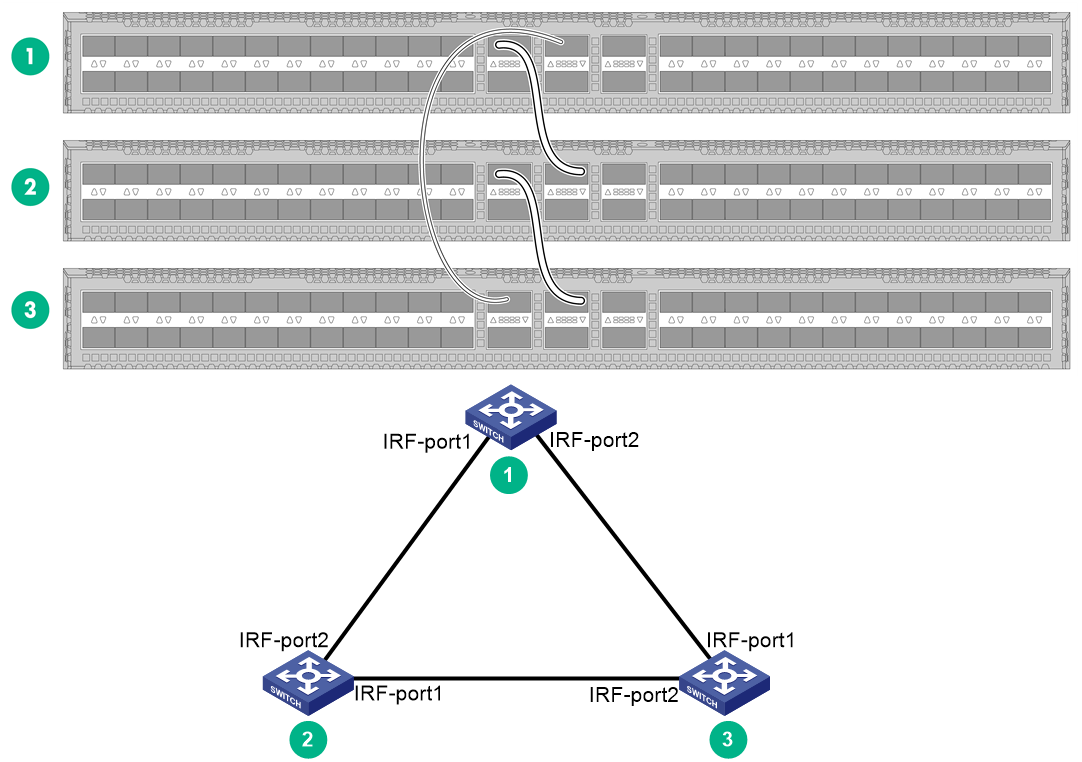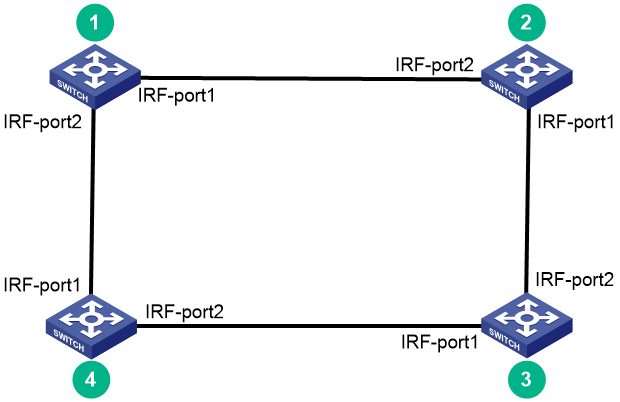- Table of Contents
- Related Documents
-
| Title | Size | Download |
|---|---|---|
| 01-Installation Guide | 3.28 MB |
Examining the installation site
Installing the switch in a 19-inch rack
Rack-mounting procedure at a glance
Chassis dimensions and rack requirements
Attaching the mounting brackets, chassis rails, and grounding cable to the chassis
Attaching the slide rails to the rack
Mounting the switch in the rack
Grounding the switch by using a grounding strip
Installing and removing a fan tray
Installing and removing a power supply
Connecting the power cord for a PSR250-12A/PSR250-12A1/PSR450-12A/PSR450-12A1 power supply
Connecting the power cord for a PSR450-12AHD power supply
Connecting the DC power cord for a PSR450-12D power supply
3 Accessing the switch for the first time
Connecting the switch to a configuration terminal
Connecting a USB-to-RJ45 console cable
Connecting a mini USB console cable
Planning IRF fabric size and the installation site
Identifying the master switch and planning IRF member IDs
Planning IRF topology and connections
Identifying physical IRF ports on the member switches
Configuring basic IRF settings
Connecting the physical IRF ports
Accessing the IRF fabric to verify the configuration
5 Maintenance and troubleshooting
Configuration terminal display issues
No display on the configuration terminal
Garbled display on the configuration terminal
1 Preparing for installation
The S6805 switch series includes the following models:
|
Product model |
Product code |
|
S6805-54HF |
· LS-6805-54HF · LS-6805-54HF-H1 |
|
S6805-54HT |
· LS-6805-54HT · LS-6805-54HT-H1 |
A product model in the S6805 switch series includes switches with different product codes. To identify the product code of your switch, read the product barcode on its rear panel.
In this document, if only the product model is provided, related information applies to all product codes of that product model. If the product model and product code or only the product code is provided, related information applies only to the switch with that product code. For example, the S6805-54HF switch model includes switches with the LS-6805-54HF and LS-6805-54HF-H1 product codes. Information described for the S6805-54HF switch model applies to the switches with the LS-6805-54HF or LS-6805-54HF-H1 product code. Information described for the S6805-54HF (LS-6805-54HF) or the LS-6805-54HF product node applies only to the switch with the LS-6850-56HF product code.
|
Product model |
Product code |
|
S6805-54HF |
· LS-6805-54HF · LS-6805-54HF-H1 |
|
S6805-54HT |
· LS-6805-54HT · LS-6805-54HT-H1 |
One product model in the S6805 switch series includes switches with different product codes. To identify the product code of your switch, read the product barcode on its rear panel.
In this document, if only the product model is provided, related information applies to all product codes of that product model. If the product model and product code or only the product node is provided, related information applies only to the switch with that product code. For example, information described for the S6850-56HF switch model applies to the LS-6850-56HF and LS-6850-56HF-H1 product codes. Information described for the S6850-56HF (LS-6850-56HF) or the LS-6850-56HF product node applies only to the LS-6850-56HF product code.
Safety recommendations
To avoid any equipment damage or bodily injury caused by incorrect use, read the following safety recommendations before installation. Note that the recommendations do not cover every possible hazardous condition.
· Before cleaning the switch, remove all power cords from the switch. Do not clean the switch with wet cloth or liquid.
· Do not place the switch near water or in a damp environment. Prevent water or moisture from entering the switch chassis.
· Do not place the switch on an unstable case or desk. The switch might be severely damaged in case of a fall.
· Ensure good ventilation of the equipment room and keep the air inlet and outlet vents of the switch free of obstruction.
· Connect the yellow-green protection grounding cable before power-on.
· Make sure the operating voltage is in the required range.
· To avoid electrical shocks, do not open the chassis while the switch is operating or when the switch is just powered off.
· When replacing FRUs, including power supplies and fan trays, wear an ESD wrist strap to avoid damaging the units.
Examining the installation site
The switch must be used indoors. Mount your switch in a rack and verify the following items:
· Adequate clearance is reserved at the air inlet and outlet vents for ventilation.
· The rack has a good ventilation system.
· Identify the hot aisle and cold aisle at the installation site, and make sure ambient air flows into the switch from the cold aisle and exhausts to the hot aisle.
· Identify the airflow designs of neighboring devices, and prevent hot air flowing out of the bottom device from entering the top device.
· The rack is sturdy enough to support the switch and its accessories.
· The rack is reliably grounded.
To ensure correct operation and long service life of your switch, install it in an environment that meets the requirements described in the following subsections.
Temperature/humidity
Maintain appropriate temperature and humidity in the equipment room.
· Lasting high relative humidity can cause poor insulation, electricity leakage, mechanical property change of materials, and metal corrosion.
· Lasting low relative humidity can cause washer contraction and ESD and cause problems including loose screws and circuit failure.
· High temperature can accelerate the aging of insulation materials and significantly lower the reliability and lifespan of the switch.
For the temperature and humidity requirements of different switch models, see H3C S6805 Switch Series Hardware Information and Specifications.
Cleanliness
Dust buildup on the chassis might cause electrostatic adsorption and dust corrosion, resulting in poor contact of metal connectors and contact points. This might shorten the device's lifetime and even cause device failure in the worst case. Table1-1 describes the switch requirement for cleanliness.
Table1-1 Switch requirement for cleanliness
|
Substance |
Particle diameter |
Concentration limit |
|
Dust particles |
≥ 0.5 µm |
≤ 1.8 × 107 particles/m3 |
To maintain cleanliness in the equipment room, follow these guidelines:
· Keep the equipment room away from pollution sources. Do not smoke, eat, or drink in the equipment room.
· Use double-layer glass in windows and seal doors and windows with dust-proof rubber strips. Use screen doors and window screens for doors and windows open to the outside and make sure the external windows are air tight.
· Use dustproof materials for floors, walls, and ceilings and use wallpaper or matt paint that does not produce powders.
· Clean the equipment room regularly and clean the air filters of the rack each month.
· Wear ESD clothing and shoe covers before entering the equipment room, keep the ESD clothing and shoe covers clean, and change them frequently.
Corrosive gas limit
Corrosive gases can accelerate corrosion and aging of metal components. Make sure the corrosive gases do not exceed the concentration limits as shown in Table1-2.
Table1-2 Corrosive gas concentration limits
|
Gas |
Average concentration (mg/m3) |
Maximum concentration (mg/m3) |
|
SO2 |
0.3 |
1.0 |
|
H2S |
0.1 |
0.5 |
|
Cl2 |
0.1 |
0.3 |
|
HCI |
0.1 |
0.5 |
|
HF |
0.01 |
0.03 |
|
NH3 |
1.0 |
3.0 |
|
O3 |
0.05 |
0.1 |
|
NOX |
0.5 |
1.0 |
|
CAUTION: As a best practice, control the corrosive gas concentrations in the equipment room at their average values. Make sure the corrosive gas concentrations do not exceed 30 minutes per day at their maximum values. |
To control corrosive gases, use the following guidelines:
· As a best practice, do not build the equipment room in a place with a high concentration of corrosive gases.
· Make sure the equipment room is not connected to sewer, vertical shaft, or septic tank pipelines and keep it far away from these pipelines. The air inlet of the equipment room must be away from such pollution sources.
· Use environmentally friendly materials to decorate the equipment room. Avoid using organic materials that contains harmful gases, such as sulfur or chlorine-containing insulation cottons, rubber mats, sound-proof cottons, and avoid using plasterboards with high sulfur concentration.
· Place fuel (diesel or gasoline) engines separately. Do not place them in the same equipment room with the device. Make sure the exhausted air of the engines will not flow into the equipment room or towards the air inlet of the air conditioners.
· Place batteries separately. Do not place them in the same room with the device.
· Employ a professional company to monitor and control corrosive gases in the equipment room regularly.
EMI
All electromagnetic interference (EMI) sources, from outside or inside of the switch and application system, adversely affect the switch in the following ways:
· A conduction pattern of capacitance coupling.
· Inductance coupling.
· Electromagnetic wave radiation.
· Common impedance (including the grounding system) coupling.
To prevent EMI, use the following guidelines:
· If AC power is used, use a single-phase three-wire power receptacle with protection earth (PE) to filter interference from the power grid.
· Keep the switch far away from radio transmitting stations, radar stations, and high-frequency devices.
· Use electromagnetic shielding, for example, shielded interface cables, when necessary.
· To prevent signal ports from getting damaged by overvoltage or overcurrent caused by lightning strikes, route interface cables only indoors.
Laser safety
|
WARNING! · The switch is a Class 1M laser device. · Disconnected optical fibers or transceiver modules might emit invisible laser light. Do not stare into beams or view directly with optical instruments when the switch is operating. |
Installation tools
No installation tools are provided with the switch. Prepare the following tools yourself:
· Phillips screwdriver.
· Flathead screwdriver.
· ESD wrist strap.
· Marker.
Installation accessories
Before installation, make sure you have all the required installation accessories. If any accessory is damaged or missing, use the part No. provided in this table to purchase a new one.
Table1-3 Installation accessories
|
Part No. |
Description |
Quantity |
Applicable device models |
|
0223A19T |
Mounting brackets |
1 pair, provided (If the mounting bracket has a small round role, you can use the hole to hang the asset tag.) |
All S6805 models |
|
2150A050 |
1U rack mounting rail kit A (long slide rails) |
1 kit, provided |
All S6805 models |
|
2150A0CP |
1U rack mounting rail kit B (super-short slide rails) |
Optional |
S6805-54HF |
|
2150A05D |
1U rack mounting rail kit C |
Optional |
S6805-54HT |
|
N/A |
M6 screw and cage nut |
User supplied |
All S6805 models |
|
0404A1RB (single-hole grounding lug) or 0404A0KM (two-hole grounding lug) |
Grounding cable that has a single-hole grounding lug Grounding cable that has a two-hole grounding lug |
1, provided |
All S6805 models |
|
N/A |
Grounding screw |
2, provided |
All S6805 models |
|
2114A09C |
Power supply filler panel |
1, provided |
All S6805 models |
|
N/A |
Releasable cable tie |
User supplied |
All S6805 models |
|
04042967 |
Serial console cable |
Optional |
All S6805 models |
|
0404A1EE |
USB-to-RJ45 console cable |
Optional |
All S6805 models |
|
N/A |
Mini USB console cable |
User supplied |
All S6805 models |
|
14990101 |
SFP port plug |
Same number as the SFP/SFP+ ports |
All S6805 models |
|
1499A01G |
QSFP port plug |
Same number as the QSFP28 ports |
All S6805 models |
2 Installing the switch
|
CAUTION: Keep the tamper-proof seal on a mounting screw on the chassis cover intact, and if you want to open the chassis, contact H3C for permission. Otherwise, H3C shall not be liable for any consequence caused thereby. |
|
CAUTION: Always wear an ESD wrist strap during the installation process. Make sure the wrist strap makes good skin contact and is reliably grounded. |
Figure2-1 Hardware installation flow
Installing the switch in a 19-inch rack
Installation accessories
Table2-2 Installation accessories
|
Switch model |
Mounting brackets |
Rack mounting rail kit |
|
S6805-54HF |
1U high, one pair (provided). See Figure2-2. If the mounting bracket has a small round role, you can use the hole to hang the asset tag. |
· 1U rack mounting rail kit A, including one pair of chassis rails and one pair of long slide rails (provided). See Figure2-3. · 1U rack mounting rail kit B, including one pair of chassis rails and one pair of super-short slide rails (optional). See Figure2-4. |
|
S6805-54HT |
1U high, one pair (provided). See Figure2-2. If the mounting bracket has a small round role, you can use the hole to hang the asset tag. |
· 1U rack mounting rail kit A, including one pair of chassis rails and one pair of long slide rails (provided). See Figure2-3. · 1U rack mounting rail kit C, including one pair of chassis rails and one pair of slide rails (optional). See Figure2-5. |
Figure2-3 1U rack mounting rail kit A (long slide rails)
|
(1) Chassis rail |
(2) Long slide rail |
Figure2-4 1U rack mounting rail kit B (super-short slide rails)
|
(1) Chassis rail |
(2) Super-short slide rail |
Figure2-5 1U rack mounting rail kit C
|
(1) Chassis rail |
(2) Slide rail |
Rack-mounting procedure at a glance
Figure2-6 Rack-mounting procedure
|
|
NOTE: If a rack shelf is available, you can put the switch on the rack shelf, slide the switch to an appropriate location, and attach the switch to the rack with the mounting brackets. |
Chassis dimensions and rack requirements
Figure2-7 S6805-54HF chassis dimensions with the mounting brackets installed at the port side
|
(1) Power supply handle |
(2) Mounting bracket |
Figure2-8 S6805-54HF chassis dimensions with the mounting brackets installed at the power supply side
|
(1) Power supply handle |
(2) Mounting bracket |
Figure2-9 S6805-54HT chassis dimensions with the mounting brackets installed at the port side
|
(1) Power supply handle |
(2) Mounting bracket |
Figure2-10 S6805-54HT chassis dimensions with the mounting brackets installed at the power supply side
|
(1) Power supply handle |
(2) Mounting bracket |
Follow these guidelines when you install the switch in a 19-inch rack:
· The distance between the front and rear posts of the rack must meet the requirements described in Table2-3.
· To secure the switch to the rack, you must install not only mounting brackets, but also chassis rails and slide rails.
Table2-3 Distance requirements between the front and rear rack posts
|
Switch model |
Installation method |
Distance between the front and rear rack posts |
|
S6805-54HF |
Using mounting brackets and rack mounting rail kit A (long slide rails) |
621 mm to 793 mm (24.45 in to 31.22 in) |
|
Using mounting brackets and rack mounting rail kit B (super-short slide rails, narrow-spacing installation) |
330 mm to 505 mm (12.99 in to 19.88 in) |
|
|
Using mounting brackets and rack mounting rail kit B (super-short slide rails, wide-spacing installation) |
438 mm to 632 mm (17.24 in to 24.88 in) |
|
|
S6805-54HT |
Using mounting brackets and rack mounting rail kit A (long slide rails) |
621 mm to 854 mm (24.45 in to 33.62 in) |
|
Using mounting brackets and rack mounting rail kit C |
401 mm to 634 mm (15.79 in to 24.96 in) |
Table2-4 Chassis dimensions and rack depth requirements
|
Device model |
Chassis dimensions |
Rack depth requirement |
|
S6805-54HF |
· Height—44 mm (1.73 in) (1 RU) · Width—440 mm (17.32 in). · Total depth—425 mm (16.73 in) ¡ 25 mm (0.98 in) for the power supply or fan tray handle ¡ 400 mm (15.75 in) for the chassis. |
To ensure that the rack door can be closed easily after cables are connected, make sure the rack meets the following requirements: · A minimum of 800 mm (31.50 in) in depth (recommended) · A minimum of 130 mm (5.12 in) from the front rack post to the front door · A minimum of 449 mm (17.68 in) from the front rack post to the rear door |
|
S6805-54HT |
· Height—44 mm (1.73 in) (1 RU) · Width—440 mm (17.32 in). · Total depth—485 mm (19.09 in) ¡ 25 mm (0.98 in) for the power supply or fan tray handle ¡ 460 mm (18.11 in) for the chassis. |
To ensure that the rack door can be closed easily after cables are connected, make sure the rack meets the following requirements: · A minimum of 800 mm (31.50 in) in depth (recommended) · A minimum of 130 mm (5.12 in) from the front rack post to the front door · A minimum of 509 mm (20.04 in) from the front rack post to the rear door |
Attaching the mounting brackets, chassis rails, and grounding cable to the chassis
The switch has two mounting bracket installation positions on its two side panels: one near the network port side and one near the power supply side.
The switch provides a primary grounding point (with a grounding sign) and an auxiliary grounding point.
The S6805-54HF and S6805-54HT switches are identical in the mounting bracket installation positions and grounding point positions. Figure2-11 describes these positions on the S6805-54HF switch.
Figure2-11 Mounting bracket installation positions and grounding point positions on the S6805-54HF switch
|
(1) Mounting bracket installation position near the power supply side |
|
|
(2) Primary grounding point |
(3) Auxiliary grounding point |
|
(4) Mounting bracket installation position near the port side |
|
Attaching the mounting brackets and chassis rails to the chassis
|
IMPORTANT: M4 screws are used to secure the mounting brackets and chassis rails to the switch. As a best practice, use a torque of 12 kgf-cm (1.18 Nm) to fasten M4 screws. |
To attach the mounting brackets and chassis rails to the chassis:
1. Place the wide flange of a mounting bracket against a side panel of the chassis and align the round holes in the wide flange of the front mounting bracket with the screw holes in the side panel. Then use M4 screws (provided) to attach the mounting bracket to the chassis.
¡ To install the mounting brackets at the port side, see Figure2-12, Figure2-13, Figure2-14, and Figure2-18.
¡ To install the mounting brackets at the power supply side, see Figure2-15, Figure2-16, Figure2-17, and Figure2-19.
2. Determine the chassis rail installation position based on the mounting bracket installation position.
3. Place the chassis rail against the side panel of the chassis and align the installation holes in the chassis rail with rail mounting holes in the chassis. Then use M4 screws (provided) to attach the chassis rail to the chassis.
¡ For installation of chassis rails of rack mounting rail kit A (long slide rails) and rack mounting rail kit C, see Figure2-12, Figure2-15, Figure2-18, and Figure2-19.
¡ The chassis rails of rack mounting rail kit B (super-short slide rails) support narrow-spacing installation and wide-spacing installation. Select narrow-spacing (as shown in Figure2-13 and Figure2-16) or wide-spacing (as shown in Figure2-14 and Figure2-17) installation based on the distance between the front and rear rack posts.
4. Follow the same procedure to attach another mounting bracket and chassis rail to the opposite side.
Figure2-12 Attaching the mounting brackets and chassis rails to an S6805-54HF switch (mounting brackets installed near the port side, rack mounting rail kit A)
Figure2-13 Attaching the mounting brackets and chassis rails to an S6805-54HF switch (mounting brackets installed near the port side, rack mounting rail kit B, narrow-spacing installation)
Figure2-14 Attaching the mounting brackets and chassis rails to an S6805-54HF switch (mounting brackets installed near the port side, rack mounting rail kit B, wide-spacing installation)
Figure2-16 Attaching the mounting brackets and chassis rails to an S6805-54HF switch (mounting brackets installed near the power supply side, rack mounting rail kit B, narrow-spacing installation)
Figure2-17 Attaching the mounting brackets and chassis rails to an S6805-54HF (mounting brackets installed near the power supply side, rack mounting rail kit B, wide-spacing installation)
Connecting the grounding cable to the chassis
|
IMPORTANT: The primary and auxiliary grounding points are located on the left side panel of the chassis. The two grounding points might be not reachable after the switch is mounted in the rack. Connect the grounding cable to a grounding point before you mount the switch in the rack. |
Use M5 grounding screws to attach a grounding cable that has a two-hole grounding lug or single-hole grounding lug to the grounding point on the switch. If the grounding cable length or terminal type cannot meet your requirement, make an applicable grounding cable or contact H3C Support.
Select the primary or auxiliary grounding point as required. The following procedure connects the grounding cable to the primary grounding point (near the power supply side) on an S6805-54HF switch.
To connect the grounding cable to a grounding point:
1. Unpack the grounding cable and grounding screws (applicable to both the primary and auxiliary grounding points).
2. Use the grounding screws to attach the single-hole grounding lug or two-hole grounding lug to the grounding point and then fasten the screws (clockwise direction), as shown in Figure2-20 and Figure2-21.
As a best practice, use a torque of 30 kgf-cm (2.94 Nm) to fasten the grounding screws.
Attaching the slide rails to the rack
|
IMPORTANT: M6 screws and cage nuts are used to attach the slide rails to the rack. Prepare M6 screws and cage nuts yourself. As a best practice, use a torque of 30 kgf-cm (2.94 Nm) to fasten the M6 screws. |
Before mounting the switch in the rack, you must attach slide rails to the rack.
The installation procedure is the same for different types of slide rails. The following procedure attaches 1U long slide rails to the rack.
To attach the slide rails to the rack:
1. Identify the slide rail installation position on the rack based on the switch installation position.
2. Install cage nuts (user-supplied) in the mounting holes in the rack posts.
3. Align the screw holes in one slide rail with the cage nuts in a rear rack post, and then use M6 screws (user-supplied) to attach the slide rail to the rack, as shown in Figure2-22.
4. Attach the other slide rail to the rear rack post on the opposite side.
Make sure the two slide rails are at the same height and can slide into the chassis rails smoothly.
Figure2-22 Installing the 1U long slide rails
Mounting the switch in the rack
The rack-mounting procedure is similar for the switches. The following procedure mounts an S6805-54HF switch in a rack.
This task requires two people.
To mount the switch in the rack:
1. Wear an ESD wrist strap and make sure it makes good skin contact and is reliably grounded.
2. Verify that the mounting brackets and chassis rails have been securely attached to the switch chassis.
3. Verify that the slide rails have been correctly attached to the rear rack posts.
4. Attach cage nuts (user-supplied) to the front rack posts and make sure they are at the same level as the slide rails.
5. One person performs the following operations:
a. Supporting the bottom of the switch, aligns the chassis rails with the slide rails on the rack posts.
b. Pushes the switch slowly for the slide rails to slide into the chassis rails smoothly until the mounting brackets are flush against the front rack posts.
- For long slide rails of rack mounting rail kit A and slide rails of rack mounting rail kit C, make sure the front ends of the slide rails reach out of the chassis rails.
- For super-short slide rails of rack mounting rail kit B, make sure the slide rails slide a minimum length of 90 mm (3.54 in) into the chassis rails.
6. The other person uses screws (user-supplied, rust-proofed) to attach the mounting brackets to the rack.
Figure2-24 Mounting an S6805-54HF switch in the rack (mounting brackets installed near the port side)
Grounding the switch by using a grounding strip
|
CAUTION: · Correctly connecting the grounding cable is crucial to lightning protection and EMI protection. · Do not connect the grounding cable to a fire main or lightning rod. · To guarantee the grounding effect and avoid switch damage, use the grounding cable provided with the switch to connect the switch to a grounding strip in the equipment room. |
The power input end of the switch has a noise filter, whose central ground is directly connected to the chassis to form the chassis ground (commonly known as PGND). You must securely connect this chassis ground to the earth so the faradism and leakage electricity can be safely released to the earth to minimize EMI susceptibility of the switch.
To ground the switch by using a grounding strip:
1. Attach the two-hole grounding lug at one end of the grounding cable to a grounding point on the switch chassis. For more information, see "Connecting the grounding cable to the chassis."
2. Remove the hex nut of a grounding post on the grounding strip.
3. Attach the ring terminal at the other end of the grounding cable to the grounding post on the grounding strip, and secure the ring terminal to the grounding post with the hex nut.
Figure2-25 Connecting the grounding cable to a grounding strip
|
(1) Hex nut |
(2) Ring terminal |
|
(3) Grounding post |
(4) Grounding strip |
Installing and removing a fan tray
|
CAUTION: · For adequate heat dissipation, you must install five fan trays of the same model for the switch. · Do not install fan trays of different models on the same switch. · Make sure all slots have a module installed when the switch is operating. · If more than one fan tray fails during switch operation, do not remove the failed fan trays simultaneously. Replace the fan trays one by one and finish replacing each fan tray within three minutes. |
|
CAUTION: Select fan trays and power supplies that have the airflow direction matching the ventilation requirements at the installation site. As a best practice, make sure the power supplies and fan trays on the switch have the same airflow direction. For the fan trays available for the switch and their specifications, see H3C S6805 Switch Series Hardware Information and Specifications. |
Installing a fan tray
|
CAUTION: To prevent damage to the fan tray or the connectors on the backplane, insert the fan tray gently. If you encounter a hard resistance while inserting the fan tray, pull out the fan tray and insert it again. |
The switch supports shipping with fan trays and power supplies installed. If the switch came with fan trays installed, skip this procedure.
Select fan trays for the switch as needed. For the fan trays available for the switch and their specifications, see H3C S6805 Switch Series Hardware Information and Specifications.
The installation procedure is the same for different models of fan trays.
To install a fan tray:
1. Wear an ESD wrist strap and make sure it makes good skin contact and is reliably grounded.
2. Unpack the fan tray and verify that the fan tray model is correct.
3. Orient the fan tray with the "TOP" mark facing upward. Grasp the handle of the fan tray with one hand and support the fan tray bottom with the other, and slide the fan tray along the guide rails into the slot until the fan tray is fully seated in the slot and has a firm contact with the backplane.
Figure2-26 Installing a fan tray (LSPM1FANSA)
Removing a fan tray
|
WARNING! · Ensure electricity safety and never touch the rotating fans when you hot-swap a fan tray. · To prevent an unbalanced fan from causing loud noise, do not touch the fans, even if they are not rotating. · Do not touch any bare wires and terminals on a fan tray. · Do not place a fan tray in a moist location or let liquid flow into it. · Contact H3C Support if the circuits or components on a fan tray are faulty. Do not remove any fan tray components. |
The removal procedure is the same for different models of fan trays.
1. Wear an ESD wrist strap and make sure it makes good skin contact and is reliably grounded.
2. Press the fan tray handles towards each other to disengage the fan tray from the chassis. Then pull out the fan tray slowly out of the slot along the guide rails.
3. Place the removed fan tray in an antistatic bag.
Figure2-27 Removing a fan tray (LSPM1FANSA)
Installing and removing a power supply
|
CAUTION: · As a best practice, install two power supplies on the switch for 1+1 redundancy. · Select fan trays and power supplies that have the airflow direction matching the ventilation requirements at the installation site. As a best practice, make sure the power supplies and fan trays on the switch have the same airflow direction. · The switch supports mixed installation of power supplies consistent in the output power and airflow direction. These power supplies are PSR450-12A1, PSR450-12AHD, and PSR450-12D. |
The switch comes with power supply slot PWR1 empty and power supply slot PWR2 installed with a filler panel. As a best practice, install two power supplies of the same model for the switch.
Select power supplies for the switch as required. For the power supplies available for the switch and their specifications, see H3C S6805 Switch Series Hardware Information and Specifications.
Precautions
· Provide a separate circuit breaker for each power supply.
· To avoid device damage and body injury, strictly follow procedures in Figure2-28 and Figure2-29 to install and remove a power supply, respectively.
Figure2-28 Installation procedure
· If a power supply slot is empty, install a filler panel in it to ensure adequate heat dissipation.
Installing a power supply
The S6805-54HF switch supports PSR250-12A, PSR250-12A1, PSR450-12A, PSR450-12A1, PSR450-12AHD, and PSR450-12D power supplies.
The S6805-54HT switch supports PSR450-12A, PSR450-12A1, PSR450-12AHD, and PSR450-12D power supplies.
The installation procedure is the same for different models of power supplies. The following procedure installs a PSR450-12A power supply on an S6805-54HF switch.
To install a power supply:
1. Wear an ESD wrist strap and make sure it makes good skin contact and is reliably grounded.
2. Unpack the power supply and verify that the power supply model is correct.
3. Correctly orient the power supply with the lettering on it upward. Grasp the handle of the power supply with one hand and support its bottom with the other, and slide the power supply slowly along the guide rails into the slot. Make sure the power supply has good contact with the backplane.
To prevent connector damages, insert the power supply gently. The power supply and power supply slot have disorientation rejection designs. If you encounter a hard resistance while inserting the power supply, pull out the power supply and insert it again.
Figure2-30 Installing a power supply
|
IMPORTANT: If the target power supply slot has a filler panel installed, first remove the filler panel from the slot (as shown Figure2-31). |
Figure2-31 Removing the filler panel from a power supply slot
Removing a power supply
|
CAUTION: When the switch has two power supplies in 1+1 redundancy mode, removing one power supply does not affect the operation of the switch. When the switch has only one power supply installed, removing the power supply powers off the switch. |
Removing a PSR250-12A/PSR250-12A1/PSR450-12A/PSR450-12A1 power supply
The removal procedure is the same for the PSR250-12A, PSR250-12A1, PSR450-12A, and PSR450-12A1 power supplies. The following procedure removes a PSR450-12A power supply from an S6805-54HF switch.
To remove a PSR450-12A power supply:
1. Wear an ESD wrist strap and make sure it makes good skin contact and is reliably grounded.
2. Remove the power cord.
3. Hold the handle on the power supply with one hand, pivot the latch on the power supply to the right with your thumb, and pull the power supply part way out of the slot, as shown in Figure2-32.
4. Supporting the power supply bottom with one hand, slowly pull the power supply out with the other hand.
5. Place the removed power supply in an antistatic bag for future use.
Figure2-32 Removing a PSR450-12A power supply
|
(1) Pivot the latch to the right with your thumb |
(2) Pull the power supply out |
Removing a PSR450-12AHD power supply
The following procedure removes a PSR450-12AHD power supply from an S6805-54HF switch.
To remove a PSR450-12AHD power supply:
1. Wear an ESD wrist strap and make sure it makes good skin contact and is reliably grounded.
2. Remove the power cord from the power supply.
a. Release the locking tab on the cable clamp and then open the cable clamp (see Figure2-33).
b. Remove the power cord connector from the power supply (see Figure2-34).
Figure2-33 Opening the cable clamp
Figure2-34 Removing the power cord from the power supply
3. Hold the handle of the power supply with one hand, press the latch on the power supply to the right with your thumb, and simultaneously pull the power supply part way out of the slot. Supporting the power supply bottom with the other hand, slowly pull the power supply out of the slot along the guide rails.
4. Put the removed power supply in an antistatic bag for future use.
Removing a PSR450-12D DC power supply
The following procedure removes a PSR450-12D power supply from an S6805-54HT switch.
To remove a PSR450-12D power supply:
1. Wear an ESD wrist strap and make sure it makes good skin contact and is reliably grounded.
2. Use a flat-head screwdriver to loosen the screws on the power cord connector, and then pull the connector out to remove the power cord. See Figure2-35.
3. Hold the handle on the power supply with one hand, pivot the latch on the power supply to the right with your thumb, and simultaneously pull the power supply part way out of the slot. Supporting the power supply bottom with the other, slowly pull the power supply out of the slot. See Figure2-32.
4. Put the removed power supply in an antistatic bag.
Figure2-35 Removing a PSR450-12D power supply
|
(1) Use a flat-head screwdriver to loosen the screws on the power cord connector |
|
(2) Pull the power cord connector out |
Connecting the power cord
|
WARNING! Provide a circuit breaker for each power input. When you connect a power cord, make sure the circuit breaker is switched off. |
Connecting the power cord for a PSR250-12A/PSR250-12A1/PSR450-12A/PSR450-12A1 power supply
1. Insert the female connector of the power cord supplied with the power supply into the power receptacle on the power supply.
2. Use a releasable cable tie to secure the power cord to the handle of the power supply, as shown in Figure2-36.
3. Connect the other end of the power cord to an AC or DC power source.
Figure2-36 Connecting the power cord (PSR450-12A power supply)
|
(1) Releasable cable tie |
|
(2) Fasten the cable tie to secure the power cord to the handle of the power supply |
Connecting the power cord for a PSR450-12AHD power supply
1. Slide the cable clamp onto the tie mount on the power supply, as shown in Figure2-37.
2. Connect the female connector of the power cord to the power receptacle on the power supply, as shown in Figure2-38
3. Close the cable clamp and slide it forward until it is flush against the edge of the female connector, as shown in Figure2-39.
4. Connect the other end of the power cord to an AC or DC power source.
Figure2-37 Connecting the power cord for a PSR450-12AHD power supply (1)
Figure2-38 Connecting the power cord for a PSR450-12AHD power supply (2)
Figure2-39 Connecting the power cord for a PSR450-12AHD power supply (3)
Connecting the DC power cord for a PSR450-12D power supply
1. Correctly orient the DC power cord connector and insert the connector into the power receptacle on the power supply.
If you orient the DC power cord connector upside down, you cannot insert the connector into the power receptacle.
2. Use a flat-head screwdriver to fasten the screws on the power cord connector, as shown in Figure2-40.
3. Connect the other end of the power cord to a DC power source.
Figure2-40 Connecting the DC power cord for a PSR450-12D power supply
If the provided DC power cord cannot meet your connection requirements, use the following table to prepare a suitable copper cable as the DC power cord.
Table2-5 Requirements for a suitable DC power cord
|
Power supply model |
Power cord connector |
Minimum cross sectional area of the conductor |
Cross sectional area of the provided power cord |
Maximum cross sectional area of the conductor |
|
PSR450-12D |
Use the connector of the provided power cord |
2.1 mm2 or 14 AWG |
3.3 mm2 or 12 AWG |
3.3 mm2 or 12 AWG |
Verifying the installation
After you complete the installation, verify the following items:
· There is enough space for heat dissipation around the switch, and the rack is stable.
· The grounding cable is securely connected.
· The power source is as required by the switch.
· The power cords are correctly connected.
· All the interface cables are cabled indoors. The switch does not support outdoor cable routing.
3 Accessing the switch for the first time
Connecting the switch to a configuration terminal
You can access the switch from the serial console port or the mini USB console port. If you connect both ports each to a configuration terminal, only the mini USB console port takes effect.
In Figure3-1, the switch is connected to a configuration terminal (PC as an example) from the serial console port.
Figure3-1 Connecting the switch to a configuration terminal from the serial console port
Console cables
As shown in Table3-1, three types of console cables can be used for connecting the switch to a configuration terminal. The switch is not provided with a serial console cable or a mini USB console cable.
Table3-1 Connection methods and console cables
|
Connection method |
Console cable type |
Configuration terminal-side connector |
Switch-side connector |
|
Using the serial console port for connection |
DB9-to-RJ45 console cable |
DB-9 female connector |
RJ-45 connector |
|
USB-to-RJ45 console cable |
USB connector |
RJ-45 connector |
|
|
Using the mini USB console port for connection |
Mini USB console cable |
USB connector |
USB mini-Type B connector |
The signal pinout for the RJ-45 connector of a serial console cable varies by vendor. To avoid abnormal configuration terminal display, use a serial console cable provided by H3C as shown in Table3-2. To prepare a serial console cable yourself, make sure the signal pinout for the RJ-45 connector is the same as that shown in Table3-3.
|
Console cable type |
Console cable view |
Product code for the recommended H3C console cable |
|
DB9-to-RJ45 console cable |
04042967 |
|
|
USB-to-RJ45 console cable |
0404A1EE |
|
|
Mini USB console cable |
User supplied, |
Connecting the console cable
Connecting a DB9-to-RJ45 console cable
|
CAUTION: Follow these guidelines when you connect a DB9-to-RJ45 console cable: · Identify the marks for the ports and make sure you are connecting the correct ports. · The serial ports on PCs do not support hot swapping. To connect a PC to an operating switch, first connect the PC end. To disconnect a PC from an operating switch, first disconnect the switch end. |
A DB9-to-RJ45 console cable is an 8-core shielded cable, with a crimped RJ-45 connector at one end for connecting to the serial console port on the switch, and a DB-9 female connector at the other end for connecting to the serial port on the console terminal.
Figure3-2 DB9-to-RJ45 console cable
Table3-3 DB9-to-RJ45 console cable signal pinout
|
RJ-45 |
Signal |
DB-9 |
Signal |
|
1 |
RTS |
8 |
CTS |
|
2 |
DTR |
6 |
DSR |
|
3 |
TXD |
2 |
RXD |
|
4 |
SG |
5 |
SG |
|
5 |
SG |
5 |
SG |
|
6 |
RXD |
3 |
TXD |
|
7 |
DSR |
4 |
DTR |
|
8 |
CTS |
7 |
RTS |
To connect the switch to a configuration terminal (for example, a PC) through a DB9-to-RJ45 console cable:
1. Plug the DB-9 female connector of the DB9-to-RJ45 console cable to the serial port on the PC.
2. Connect the RJ-45 connector of the cable to the serial console port on the switch.
Connecting a USB-to-RJ45 console cable
|
IMPORTANT: · To use a USB-to-RJ45 console cable to connect the switch to a configuration terminal, first download and install the USB-to-RJ45 console driver on the configuration terminal and then connect the USB-to-RJ45 console cable to the configuration terminal. · If you have connected a USB-to-RJ45 console cable to the configuration terminal before driver installation, you must remove and reconnect the USB-to-RJ45 console cable to the configuration terminal after driver installation. |
For information about the signal pinout for the RJ-45 connector of a USB-to-RJ45 console cable, see Table3-3.
The following procedure describes how to install the driver on the Windows system. To install the driver on other operating systems, see the installation guide in the driver compression package named by the corresponding operating system.
To connect the switch to the configuration terminal through a USB-to-RJ45 console cable:
1. Click the following link, or copy it to the address bar on your browser and download the USB-to-RJ45 console driver.
http://www.h3c.com/en/home/USB_to_RJ45_Console/
2. View the TXT file named Read me in the Windows folder to check whether the Windows system of the configuration terminal supports the driver.
3. If the Windows system supports the driver, install PL23XX-M_LogoDriver_Setup_v200_20190815.exe.
4. Click Next on the welcome page of the driver installation wizard.
Figure3-3 Driver installation wizard
5. Click Finish after the drive installation is completed.
Figure3-4 Finishing the driver installation
6. Connect the standard USB connector of the cable to the USB port of the configuration terminal.
7. Connect the RJ-45 connector of the cable to the console port of the switch.
Connecting a mini USB console cable
A USB mini console cable has a USB mini-Type B connector at one end to connect to the Mini USB console port of the switch, and a standard USB Type A connector at the other end to connect to the USB port on the configuration terminal.
To connect the switch to a configuration terminal by using a USB mini console cable:
1. Connect the standard USB Type A connector to the USB port on the configuration terminal.
2. Click http://www.h3c.com/en/home/USB_Console/, or copy it to the address bar on the browser to log in to download page of the USB console driver, and download the driver.
3. Run Installer to preinstall the driver. After the preinstallation finishes, the system pops up a dialog box to indicate a successful preinstallation.
4. Connect the USB mini-Type B connector to the Mini USB console port on the switch. The system installs the driver automatically.
Setting terminal parameters
To configure and manage the switch through the serial console port or mini USB console port, you must run a terminal emulator program, TeraTermPro or PuTTY, on your configuration terminal. You can use the emulator program to connect a network device, a Telnet site, or an SSH site. For more information about the terminal emulator programs, see the user guides for these programs
Configure the terminal parameters as follows:
· Bits per second—9600.
· Data bits—8.
· Stop bits—1.
· Parity—None.
· Flow control—None.
Starting the switch
1. Before powering on the switch, verify that the following requirements are met:
¡ The power cords are correctly connected.
¡ The input power voltage meets the requirement of the switch.
¡ The console cable is correctly connected.
¡ The configuration terminal (a PC, for example) has started, and the parameters are set correctly.
2. Power on the switch.
During the startup process, you can access Boot ROM menus to perform tasks such as software upgrade and file management. The Boot ROM interface and menu options vary by software versions. For more information about Boot ROM menu options, see the software-matching release notes for the device.
3. After the startup completes, you can access the CLI to configure the switch.
For more information about the configuration commands and CLI, see H3C S6805 & S6825 & S6850 & S9850 Switch Series Configuration Guides and H3C S6805 & S6825 & S6850 & S9850 Switch Series Command References.
4 Setting up an IRF fabric
You can use H3C IRF technology to connect and virtualize S6805 switches into a large virtual switch called an "IRF fabric" for flattened network topology, and high availability, scalability, and manageability.
The switch can set up an IRF fabric only with switches from the same switch series.
IRF fabric setup flowchart
Figure4-1 IRF fabric setup flowchart
To set up an IRF fabric:
|
Step |
Description |
|
1. Plan IRF fabric setup. |
Plan the installation site and IRF fabric setup parameters: · Planning IRF fabric size and the installation site · Identifying the master switch and planning IRF member IDs · Planning IRF topology and connections |
|
2. Install IRF member switches. |
|
|
3. Connect ground wires and power cords. |
See "Grounding the switch by using a grounding strip" and "Connecting the power cord." |
|
4. Power on the switches. |
N/A |
|
5. Configure basic IRF settings. |
See IRF configuration in H3C S6805 & S6825 & S6850 & S9850 Switch Series Virtual Technologies Configuration Guide. |
|
6. Connect the physical IRF ports. |
Connect the physical IRF ports on switches by using QSFP28 transceiver modules and fibers, QSFP28 fiber cables, QSFP 28 copper cables, QSFP+ transceiver modules and fibers, QSFP+ fiber cables, or QSFP+ copper cables. All switches except the master switch automatically reboot, and the IRF fabric is established. |
Planning IRF fabric setup
This section describes issues that an IRF fabric setup plan must cover.
Planning IRF fabric size and the installation site
Choose switch models and identify the number of required IRF member switches, depending on the user density and upstream bandwidth requirements. The switching capacity of an IRF fabric equals the total switching capacities of all member switches.
Plan the installation site depending on your network solution as follows:
· Place all IRF member switches in one rack for centralized high-density access.
· Distribute the IRF member switches in different racks to implement the top-of-rack (ToR) access solution for a data center.
As your business grows, you can add member switches into the IRF fabric to increase the switching capacity without any topology change or replacement.
Identifying the master switch and planning IRF member IDs
Determine which switch you want to use as the master for managing all member switches in the IRF fabric. An IRF fabric has only one master switch. You configure and manage all member switches in the IRF fabric at the command line interface of the master switch.
|
|
NOTE: IRF member switches will automatically elect a master. You can affect the election result by assigning a high member priority to the intended master switch. For more information about master election, see IRF configuration in H3C S6805 & S6825 & S6850 & S9850 Switch Series Virtual Technologies Configuration Guide. |
Prepare an IRF member ID assignment scheme. An IRF fabric uses member IDs to uniquely identify and manage its members, and you must assign each IRF member switch a unique member ID.
Planning IRF topology and connections
You can create an IRF fabric in daisy chain topology, or more reliably, ring topology. In ring topology, the failure of one IRF link does not cause the IRF fabric to split as in daisy chain topology. Rather, the IRF fabric changes to a daisy chain topology without interrupting network services.
You connect the IRF member switches through IRF ports, the logical interfaces for the connections between IRF member switches. Each IRF member switch has two IRF ports: IRF-port 1 and IRF-port 2. To use an IRF port, you must bind at least one physical port to it.
When connecting two neighboring IRF member switches, you must connect the physical ports of IRF-port 1 on one switch to the physical ports of IRF-port 2 on the other switch.
The IRF port connections in the two figures are for illustration only, and more connection methods are available.
Figure4-2 IRF fabric in daisy chain topology
Figure4-3 IRF fabric in ring topology
You can set up 100/40-GE IRF physical connections by connecting only QSFP28 ports between S6805 switches.
You can bind several ports to an IRF port for increased bandwidth and availability.
Identifying physical IRF ports on the member switches
Identify the QSFP28 ports for IRF connections on the member switches according to your topology and connection scheme.
All the QSFP28 ports on the switch can be used for IRF connections.
Planning the cabling scheme
You can use only QSFP28 transceiver modules and optical fibers, QSFP28 fiber cables, QSFP28 copper cables, QSFP transceiver modules and optical fibers, QSFP fiber cables, or QSFP copper cables to connect the switches for IRF connections.
If the IRF member switches are far away from one another, choose QSFP+/QSFP28 transceiver modules and optical fibers. If the IRF member switches are all in one equipment room, use QSFP/QSFP28 copper or fiber cables. For more information about transceiver modules and cables available for the switch, see H3C S6805 Switch Series Hardware Information and Specifications.
The following subsections describe several H3C recommended IRF connection schemes by using QSFP28 transceiver modules and optical fibers, QSFP28 copper cables, and QSFP28 fiber cables. All these schemes use a ring topology.
Connecting the IRF member switches in one rack
Figure4-4 shows an example for connecting four IRF member switches in a rack. The switches in the ring topology (see Figure4-5) are in the same order as connected in the rack.
Figure4-4 Connecting the switches in one rack
Connecting the IRF member switches in a ToR solution
You can install IRF member switches in different racks side by side to deploy a top of rack (ToR) solution.
Figure4-6 shows an example for connecting four top of rack IRF member switches by using QSFP28 cables and QSFP28 transceiver modules and optical fibers. The topology is the same as Figure4-5.
Configuring basic IRF settings
After you install the IRF member switches, power on the switches and then log in to each IRF member switch to configure basic IRF settings, including their member IDs, member priorities, and IRF port bindings.
For the approaches to accessing the switch, see login management in H3C S6805 & S6825 & S6850 & S9850 Switch Series Fundamentals Configuration Guide.
For information about configuring IRF settings, see IRF configuration in H3C S6805 & S6825 & S6850 & S9850 Switch Series Virtual Technologies Configuration Guide,.
Connecting the physical IRF ports
|
CAUTION: Wear an ESD wrist strap when you connect fiber or copper cables or transceiver modules and optical fibers. For more information, see the installation guide for the transceiver modules and cables. |
Use fiber or copper cables or transceiver modules and optical fibers to connect the IRF member switches as planned.
Accessing the IRF fabric to verify the configuration
To verify the basic functionality of the IRF fabric:
1. Log in to the IRF fabric through the console port of any member switch.
2. Create a Layer 3 interface, assign it an IP address, and make sure the IRF fabric and the remote network management station can reach each other.
3. Use Telnet or SNMP to access the IRF fabric from the network management station. For more information about the accessing method, see login management in H3C S6805 & S6825 & S6850 & S9850 Switch Series Fundamentals Configuration Guide.
4. Display the running status of the IRF fabric by using the commands in Table4-1.
Table4-1 Displaying and maintaining IRF configuration and running status
|
Task |
Command |
|
Display information about the IRF fabric. |
display irf |
|
Display all members' IRF configurations. |
display irf configuration |
|
Display IRF fabric topology information. |
display irf topology |
|
|
NOTE: To avoid IP address collision and network issues, configure at least one multi-active detection (MAD) mechanism to detect the presence of multiple identical IRF fabrics and handle collisions. For more information about MAD detection, see H3C S6805 & S6825 & S6850 & S9850 Switch Series Virtual Technologies Configuration Guide. |
5 Maintenance and troubleshooting
Power supply failure
Symptom
The status LED on a power supply is not steady green (active state) or flashing green (standby state).
You can use the status LED on a power supply to identify a power supply failure. For more information about the status LED on a power supply, see H3C PSR250-12A & PSR250-12A1 Series Power Modules User Manual and H3C PSR450 Power Module Series User Manual.
Solution
To resolve the issue:
1. Verify that the power cord is correctly connected.
2. Verify that the power source is as required by the power supply.
3. Verify that the operating temperature of the switch is in an acceptable range and good ventilation is provided for the power supply.
4. If the issue persists, contact H3C Support
To replace a power supply, see "Installing and removing a power supply."
Fan tray failure
|
CAUTION: If more than one fan tray fails during the switch operation, do not remove the failed fan trays simultaneously. Replace the fan trays one by one and finish replacing each fan tray within 3 minutes. |
Symptom
The status LED on a fan tray is steady on and the system outputs a message that indicates a fan tray failure.
Solution
See "Installing and removing a fan tray" to replace the failed fan tray.
Configuration terminal display issues
No display on the configuration terminal
Symptom
The configuration terminal does not have display when the switch is powered on.
Solution
To resolve the issue:
1. Verify that the power system is operating correctly.
2. Verify that the console cable has been connected correctly and the console cable is in good condition.
3. Verify that terminal parameter settings are correct:
¡ Baud rate—9600.
¡ Data bits—8.
¡ Stop bits—1.
¡ Parity—None.
¡ Flow control—None.
4. If the issue persists, contact H3C Support.
Garbled display on the configuration terminal
Symptom
The configuration terminal displays garbled text when the switch is powered on.
Solution
To resolve the issue:
1. Verify that the terminal parameter settings are correct:
¡ Baud rate—9600.
¡ Data bits—8.
¡ Stop bits—1.
¡ Parity—None.
¡ Flow control—None.
2. If the issue persists, contact H3C Support.


